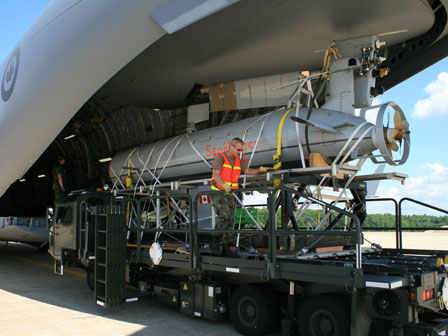Dorado
The growing threat from new-generation mines that are increasingly more difficult to detect has stimulated the demand for new mine-hunting systems that offer improved safety and operational efficiency. The Dorado vehicle, in operational service with the Canadian Department of National Defence, was developed to meet this need. The Dorado vehicle is capable of towing a sonar Towfish at speeds up to 12 knots and depths to 200 m. The Towfish was developed to follow the seabed at low altitudes and is fitted with a multibeam sidescan sonar.
CONTACT US TODAYSince the hull of the vehicle is deeply submerged, drag is greatly reduced over that of a surface drone. This permits the vehicle to operate at higher speeds and over longer ranges than surface based drones of similar size.
As the mast is the only part of the vehicle to be affected by sea state, the vehicle is much more stable in waves than surface drones or small vessels. This stability allows high-quality side scan sonar records to be obtained in elevated sea states at high speeds. As well, due to the characteristics of the surface-piercing mast, it is able to operate and transmit sonar data over a radio data link, rather than a fixed umbilical or an acoustic telemetry link. This permits standoff ranges of up to 10 km from the Mine Countermeasure Vehicle (MCMV) – ranges that are not possible from tethered drones or fully submerged Underwater Unmanned Vehicles (UUVs). The mast also permits the use of D-GPS for continuous target positioning – again, this is a feature not available with UUVs or tethered drones.
In addition to mine-hunting, the Dorado has been utilized for Seismic and Marine Science Survey work.




